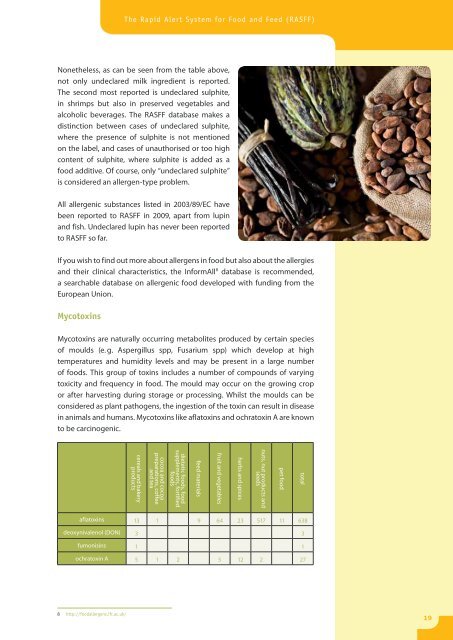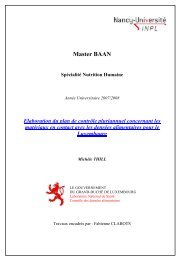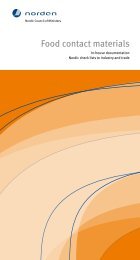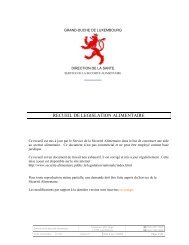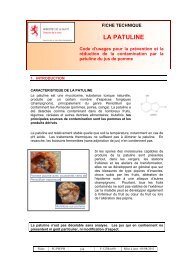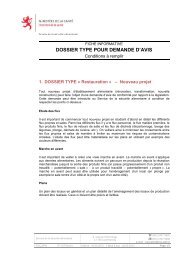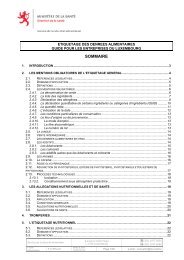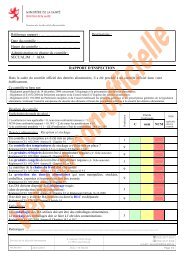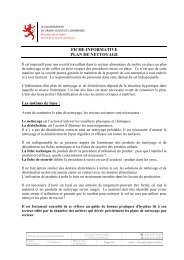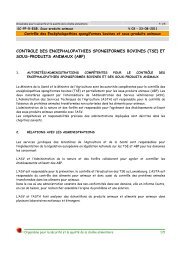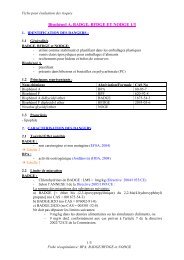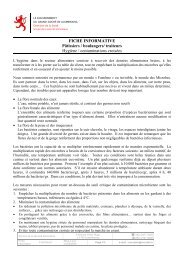(RASFF) Annual Report 2009 - European Commission - Europa
(RASFF) Annual Report 2009 - European Commission - Europa
(RASFF) Annual Report 2009 - European Commission - Europa
You also want an ePaper? Increase the reach of your titles
YUMPU automatically turns print PDFs into web optimized ePapers that Google loves.
The Rapid Alert System for Food and Feed (<strong>RASFF</strong>)<br />
Nonetheless, as can be seen from the table above,<br />
not only undeclared milk ingredient is reported.<br />
The second most reported is undeclared sulphite,<br />
in shrimps but also in preserved vegetables and<br />
alcoholic beverages. The <strong>RASFF</strong> database makes a<br />
distinction between cases of undeclared sulphite,<br />
where the presence of sulphite is not mentioned<br />
on the label, and cases of unauthorised or too high<br />
content of sulphite, where sulphite is added as a<br />
food additive. Of course, only “undeclared sulphite”<br />
is considered an allergen-type problem.<br />
All allergenic substances listed in 2003/89/EC have<br />
been reported to <strong>RASFF</strong> in <strong>2009</strong>, apart from lupin<br />
and fish. Undeclared lupin has never been reported<br />
to <strong>RASFF</strong> so far.<br />
If you wish to find out more about allergens in food but also about the allergies<br />
and their clinical characteristics, the InformAll 8 database is recommended,<br />
a searchable database on allergenic food developed with funding from the<br />
<strong>European</strong> Union.<br />
Mycotoxins<br />
Mycotoxins are naturally occurring metabolites produced by certain species<br />
of moulds (e. g. Aspergillus spp, Fusarium spp) which develop at high<br />
temperatures and humidity levels and may be present in a large number<br />
of foods. This group of toxins includes a number of compounds of varying<br />
toxicity and frequency in food. The mould may occur on the growing crop<br />
or after harvesting during storage or processing. Whilst the moulds can be<br />
considered as plant pathogens, the ingestion of the toxin can result in disease<br />
in animals and humans. Mycotoxins like aflatoxins and ochratoxin A are known<br />
to be carcinogenic.<br />
total<br />
pet food<br />
nuts, nut products and<br />
seeds<br />
herbs and spices<br />
fruit and vegetables<br />
feed materials<br />
dietetic foods, food<br />
supplements, fortified<br />
foods<br />
cocoa and cocoa<br />
preparations, coffee<br />
and tea<br />
cereals and bakery<br />
products<br />
aflatoxins 13 1 9 64 23 517 11 638<br />
deoxynivalenol (DON) 3 3<br />
fumonisins 1 1<br />
ochratoxin A 5 1 2 5 12 2 27<br />
8 http://foodallergens.ifr.ac.uk/<br />
19


